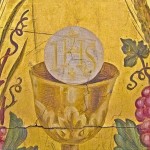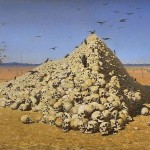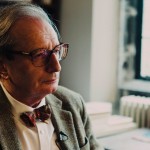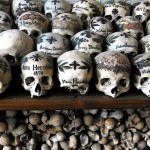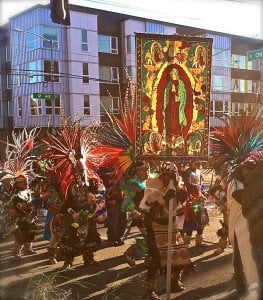
Yesterday a friend of mine from Wipf and Stock, who’s familiar with my work on Czeslaw Milosz and the Catholic analogical imagination, pointed me to a blog (Mama Unabridged) whose interests greatly overlap with mine.
They overlap so much that I think the following passages from the latest blog entry on Mama Unabridged, entitled “The Hot Medieval Heart of It All,” capture many of the essential ideas at the heart of my own talk.
The author summarizes her journey into Catholicism thus:
“This is a story about rediscovering what the word ‘faith’ actually means. To have faith is not to hold truth at arm’s length and to study it quizzically before deciding whether or not it will fit my pocket. To have faith is to enter into truth headlong, to live and move within its being, to explore it from the inside.
It’s true: I should have felt at home in the corners of Anglican and Quaker Protestantism, where my feminist inclinations first led me. That would have made sense. After all, I was able to seamlessly connect the dots between my fairly liberal beliefs and the tenets of these denominations. I tethered myself to an ethic of social justice and love; that, I thought, is where the heart of Christianity can be found.
But now I realize that isn’t true, at least not entirely. What is most unique about Christianity is not an orientation toward justice or an ethic of love – if that is all I want from a religion, well, I can find that any numbers of places, in any number of religions, even secular humanism. So the question becomes: what is it that is keeping me here, in the thrall of Christianity? Why am I still waiting in the tomb?”
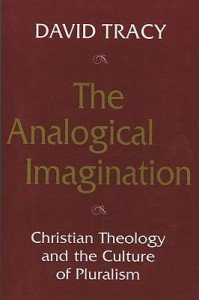
For the author the answer to these questions lies in the appeal of what David Tracy calls a Catholic analogical imagination:
“What is most unique about Christianity, most essential, is its strangeness. Its improbable, radical story that confounds the mind and refuses to contract into mere metaphor or symbol. This wild mystery of the Incarnation, this holy paradox that rushes past the furthest ends of reason and cuts through the polarities that structure and divide our world. It is not enough to say ‘be just’; it is not enough to say ‘love’ – not when love and justice are uprooted from the narrative that explains why we must love, a narrative that makes the startling claim that every human being burns bright with the spark of God, and this same God self-emptied to gestate in the body of a woman, to be born, to live the life of the body, to die, and to live again.
To be Christian is to welcome, contemplate, and live within this strange story. And to me, it is Catholicism, more than any other form of Christianity, that fully celebrates the mystery of Incarnation that is the heart of the faith.
Choosing to become Catholic has, in part, been a realization that the way I think and see the world is already deeply Catholic. While the Protestant imagination can be said to be dialectic, thinking in terms of either/or and stressing the unlikeness of things, the Catholic imagination is analogic — incarnational — seeing things in terms of likeness and unity, welcoming paradox. There is no schism between faith and reason, between the sacred and secular, between the natural and the numinous; God, the ground of all Being, inhabits each of these realms. All of reality is engraced.”
Doesn’t this sound like a sacred romance? As it should.
I’ll leave you with a poem from Milosz that evokes some of the burning (Thomistic) desire at the heart of it all:
“Esse”
I looked at that face, dumbfounded. The lights of métro stations flew by; I didn’t notice them. What can be done, if our sight lacks absolute power to devour objects ecstatically, in an instant, leaving nothing more than the void of an ideal form, a sign like a hieroglyph simplified from the drawing of an animal or bird? A slightly snub nose, a high brow with sleekly brushed-back hair, the line of the chin – but why isn’t the power of sight absolute? – and in a whiteness tinged with pink two sculpted holes, containing a dark, lustrous lava. To absorb that face but to have it simultaneously against the background of all spring boughs, walls, waves, in its weeping, its laughter, moving it back fifteen years, or ahead thirty. To have. It is not even a desire. Like a butterfly, a fish, the stem of a plant, only more mysterious. And so it befell me that after so many attempts at naming the world, I am able only to repeat, harping on one string, the highest, the unique avowal beyond which no power can attain: I am, she is. Shout, blow the trumpets, make thousands-strong marches, leap, rend your clothing, repeating only: is!
She got out at Raspail. I was left behind with the immensity of existing things. A sponge, suffering because it cannot saturate itself; a river, suffering because reflections of clouds and trees are not clouds and trees.
Brie-Comte-Robert, 1954
[For readings about the Catholic imagination look at this topical TOP10 list.]


